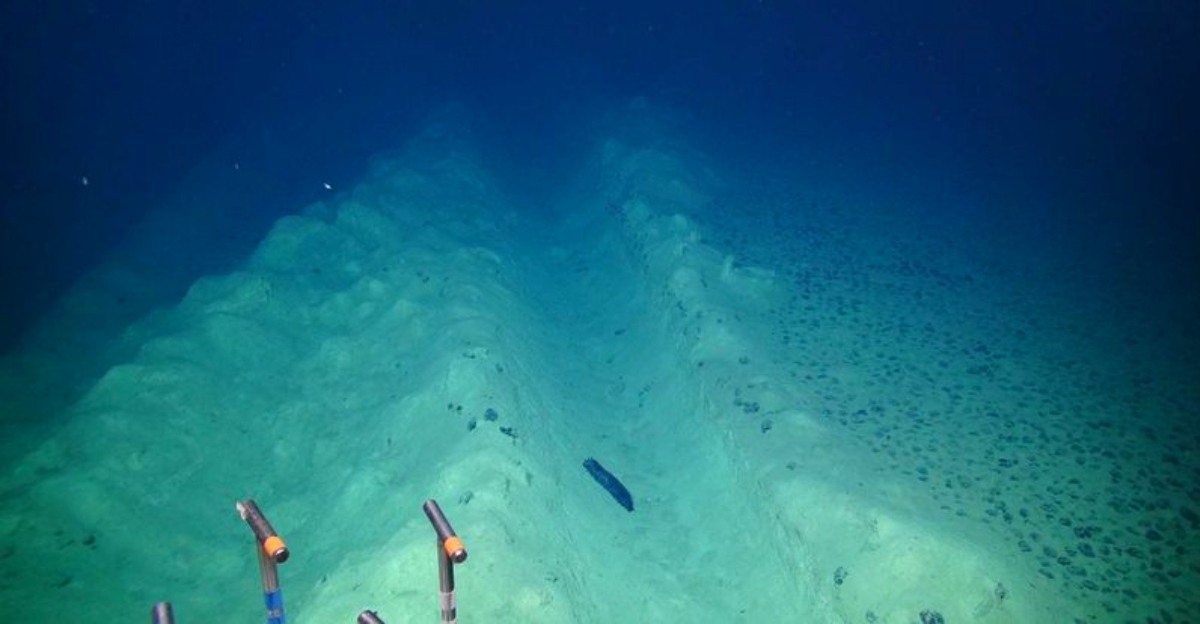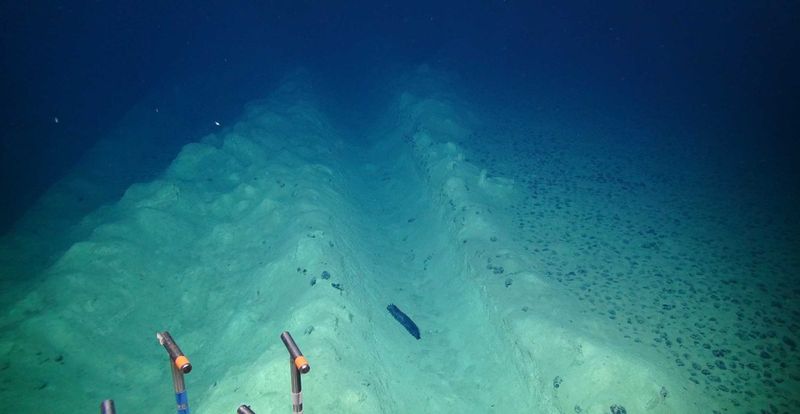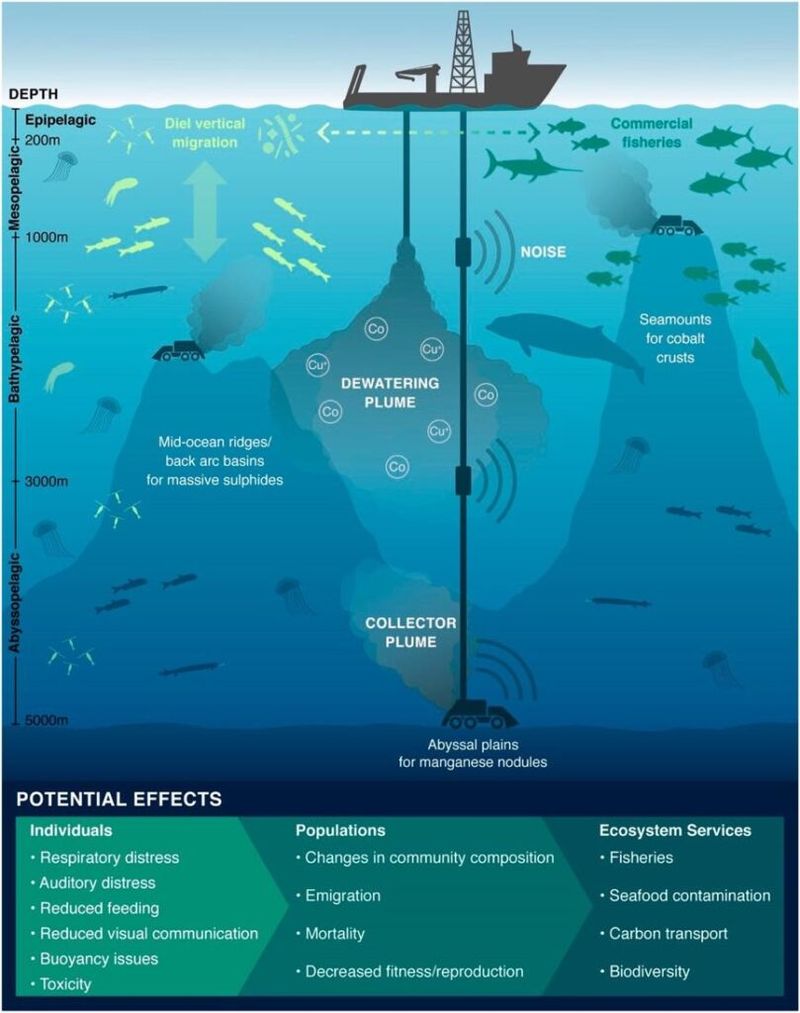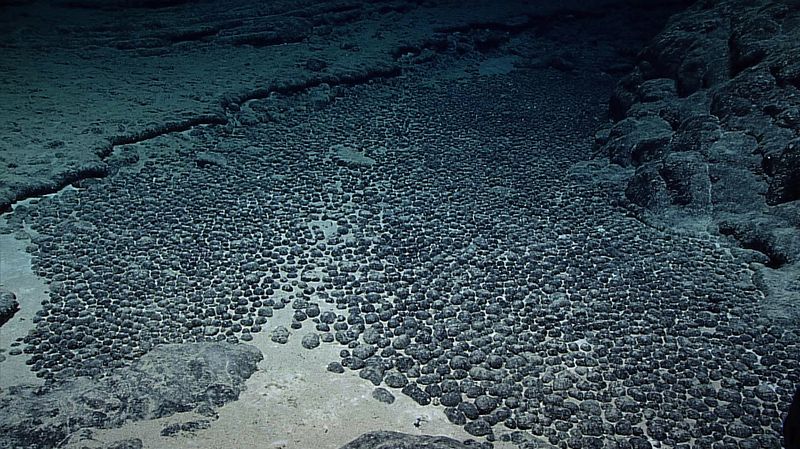Deep beneath the Pacific Ocean’s surface, a mysterious rhythmic sound has been echoing for nearly half a century. Scientists first picked up these strange “pings” in 1979, and for years, no one could figure out where they came from—was it whales, earthquakes, or something else entirely? Recently, researchers finally solved this underwater puzzle, and the answer reveals an important lesson about how human activity can leave lasting marks on our planet. This discovery connects a forgotten mining experiment to the sounds we still hear today, reminding us that the ocean keeps secrets longer than we might think.
The Unceasing Ping of the Deep
A strange, steady rhythm has been pulsing through the Clarion-Clipperton Zone for decades, baffling everyone who listened. Scientists using underwater microphones called hydrophones first caught these odd pings back in 1979, and the sound just wouldn’t quit.
Unlike whale songs or the rumble of underwater volcanoes, this noise didn’t fit any known pattern. Researchers checked for earthquakes, marine animals, and even secret submarines, but nothing matched up.
The persistence made it even stranger—year after year, the ghostly echo kept bouncing through the darkness. Some scientists nicknamed it the “phantom ping” because it seemed to come from nowhere.
What made this acoustic mystery so compelling was its regularity and location in one of Earth’s most remote underwater zones. The Pacific was hiding a secret, and it took modern detective work to finally crack the case.
A 1979 Mining Trial and Its Sonic Footprint
Turns out, the culprit was hiding in plain sight all along—a deep-sea mining experiment conducted way back in 1979. Companies testing how to harvest valuable metal lumps called polymetallic nodules sent heavy equipment down to scrape the ocean floor.
These machines left behind scars and disturbances that scientists from London’s Natural History Museum and National Oceanography Centre recently connected to the mysterious pings. The mining test carved up the seafloor, and those wounds continue speaking decades later.
One researcher described the scene as shockingly fresh: “The scars made by the mining machine 44 years ago look almost as if they were made yesterday.” That’s how slowly the deep ocean heals.
The discovery links industrial activity to long-lasting acoustic signatures, proving that what happens in the abyss doesn’t stay there—it echoes forward through time.
Ecosystems Echoed—A Warning Beneath
Beyond solving an acoustic riddle, the pings tell a darker environmental story. The 1979 mining trial didn’t just leave sounds—it devastated the seafloor ecosystem where countless tiny creatures once thrived.
While some mobile animals like fish have slowly returned, large stretches remain eerily empty compared to untouched areas. The benthos—bottom-dwelling organisms that form the foundation of deep-sea food webs—haven’t bounced back.
Now those persistent pings serve as acoustic tombstones, marking where human hands reached into the abyss and left permanent damage. With companies eyeing the Clarion-Clipperton Zone for future mining of metals used in batteries and green technology, the stakes couldn’t be higher.
Scientists worry that what started as a test run could become standard practice, creating countless new “ghost echoes” across the Pacific’s floor and wiping out ecosystems we barely understand.
Why the Noise Matters to Us
You might wonder why a weird sound thousands of feet underwater should concern anyone on land. Here’s the connection: those minerals being mined feed our hunger for smartphones, electric cars, and renewable energy equipment.
The Clarion-Clipperton Zone sits far from any coastline, yet its resources end up in devices worldwide. That 1979 test—just a tiny experiment—still reverberates through the water today, raising uncomfortable questions about full-scale operations.
Our oceans remain largely unexplored, and this discovery proves how little we understand about long-term impacts. When we damage the seafloor for resources, we’re not just affecting fish and crabs—we’re potentially altering sound patterns, disrupting animal communication, and leaving scars that outlast generations.
Those persistent Pacific pings whisper a warning: underwater actions create ripples that echo far beyond the moment we walk away.








